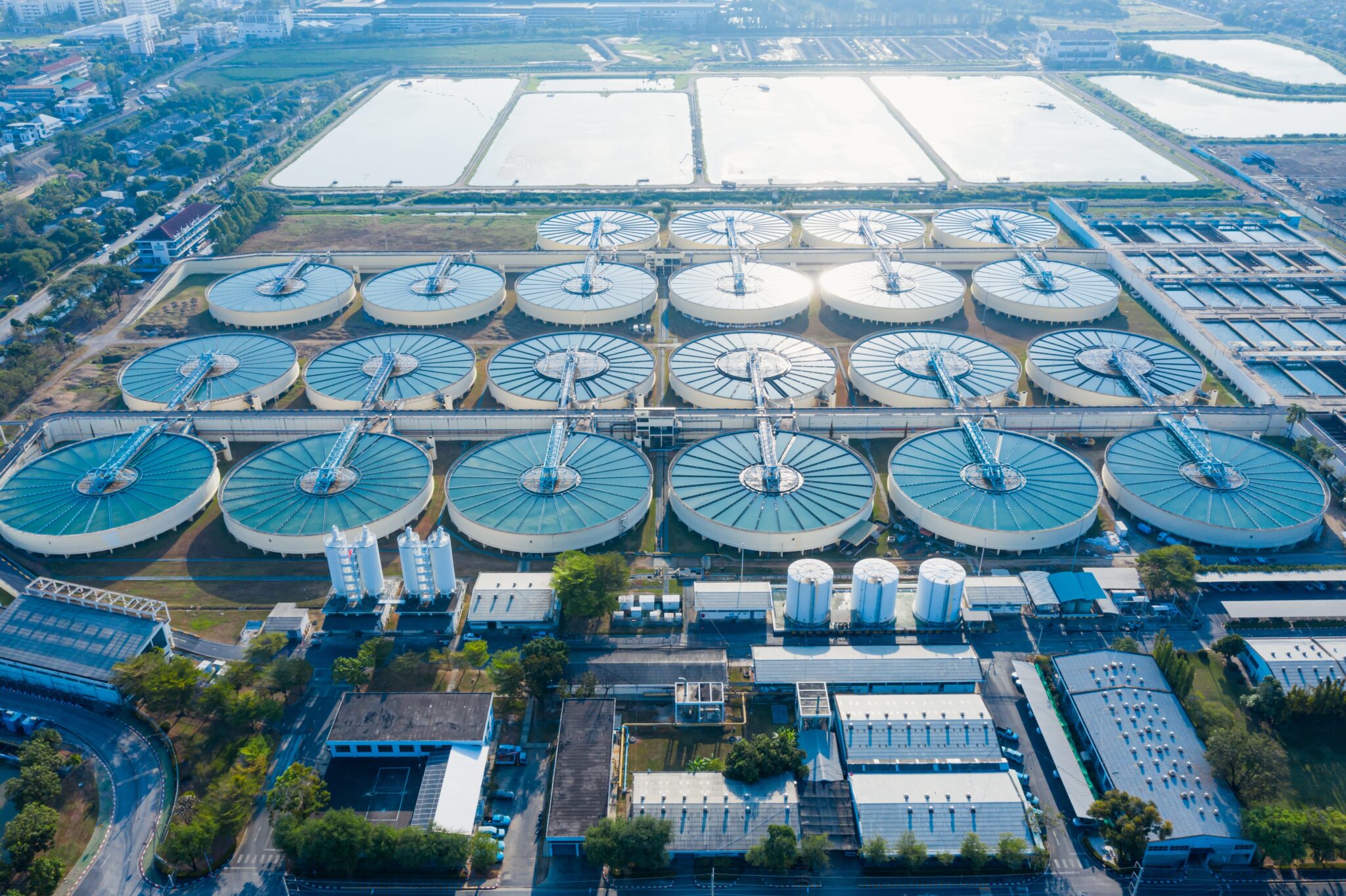•
Jul 10

Water is a valuable resource necessary for life and economic growth. In fact, it is so essential that the UN recognized the human right to water and sanitation in 2010. As the world population continues to grow and more people choose to live in cities, establishing a smart water infrastructure is essential to providing everyone with clean water.
Smart water infrastructure optimizes water management through a variety of technologies. Hardware like Internet of Things (IoT) devices and sensors are critical pieces throughout the infrastructure ecosystem, while data analysis, AI and ML models play a critical role in helping city and utility leaders react promptly to the insights the hardware reveals.
Water management encompasses multiple areas, from protecting and monitoring water supply infrastructure to ensuring water quality and effectively handling wastewater management. By implementing smart water infrastructure, municipal leaders can improve all aspects of water management and help smart cities work toward a more sustainable future.
Smart water infrastructure provides fast information access from anywhere in the system, even from hard-to-reach locations like inside pipes. The technology monitors the water and equipment, improving operations and compliance and automating continuous controlled mediation measures.
The technologies in smart water infrastructure include IoT devices (sensors), connectivity (5G), smart meters, real-time monitoring systems, advanced analytics, AI and ML algorithms and data analytics.
These devices and technologies work together to monitor water demand, predict infrastructure problems, and detect contaminants previously undetected in traditional monitoring systems. A salient aspect of smart water infrastructure is AI. AI constantly creates a better, more resilient future by reducing water loss, improving water quality and supply, and optimizing water distribution and treatment.
Smart water infrastructure differs from traditional water management in two key ways: It collects vastly more details throughout the infrastructure, and the information is collected in real- or near-real-time, allowing water management teams to react quickly.
Traditional water management systems collect data through various systems: supervisory control and data acquisition (SCADA) systems, computerized maintenance management systems (CMMS) and laboratory information management systems (LIMS). One challenge, though, is data fragmentation, which makes it difficult to understand the whole picture promptly.
With extensive 5G rollout across many developed countries, smart water infrastructure can now collect more data, because sensors work in previously difficult-to-collect areas. The data collected can be more granular, and IoT devices transmit in near real-time over 5G-enabled WiFi networks.
This faster access to data allows utilities to react and prevent problems earlier than before. For example, early leak detection prevents water loss, reduces service interruptions and makes the infrastructure more resilient.
Smart water infrastructure monitors the water and equipment, improving operations and compliance and automating continuous controlled mediation measures.
The benefits of smart water infrastructure can be substantial. Some of the more immediate gains come from reduced water waste, enhanced monitoring and data analysis, and improved water quality and supply—all of which combine to ensure safe and clean water for all.
Other benefits include resource optimization, economic savings, service reliability, informed decision-making and streamlined wastewater management.
A few benefits are worth calling out in more detail:
each year.
of their energy.
Enel, an Italian energy company, has reduced
using AI for predictive maintenance.
While building smart water infrastructure requires upfront costs, efficient water supply systems are more cost-effective and extend the life of capital assets in the long run.
Water is a valuable and, in some areas, scarce resource. As highlighted in the prior section, 30% of treated water is lost in transmission. This fact is staggering, considering the cost of treatment and distribution and the global importance of conserving water.
Fortunately, digital technology is helping water utilities conserve resources in predictable and surprising ways.
Smart devices throughout the water infrastructure constantly monitor the network’s condition. Real-time data collection and automatic alerts help teams identify leaks and take quick action to avoid water loss. Machine-learning algorithms can also predict potential problems before they occur.
Securing a water network can be daunting. The system includes thousands of miles of pipes and asset-intensive treatment facilities. Digital sensors, IoT devices and high-resolution video cameras are invaluable for protecting the network. Data protection is also required to prevent hackers from interfering with vital processes like water treatment.
Water distribution and treatment use a lot of energy. A derivative benefit of smart water infrastructure is reducing energy use. Digital technologies analyze the entire network, find inefficiencies and make recommendations to improve operations, saving money and contributing to sustainability gains.
Predictive analytics helps water management teams identify areas for improvement. AI and machine-learning models can analyze infinite data points, anticipate future events, recommend corrective measures to prevent waste and suggest new ways to conserve water.
Data collection gives water management teams real-time information about system performance and water usage for every customer, commercial or residential. These insights identify wasteful habits so the utility can partner with end users to improve their consumption habits and reduce excessive water use.
8 Ways AI in Water Management Creates a Better Future
Smart water infrastructure uses many technologies to improve water management, from supply management to sewage treatment. Technological advances have enabled the extraction of valuable information about the entire water ecosystem.
To facilitate this outcome, smart water infrastructure tends to be comprised of a number of critical components, each with a specific and important function.
Together, these components put the “smart” in smart water infrastructure by utilizing AI in water and utilities to provide insights about the entire water system. Of all components, the skills gap may be one of the most challenging aspects of building a smart water infrastructure. Upskilling the existing workforce is one recommended strategy.

Risk Management
Advanced Water Treatment and Automation
Water Supply Quality and Quantity Monitoring
Pressure Control and Leakage Detection
Advanced Metering and Management System

While the benefits of smart water infrastructure are clear, no technology project is without challenges. Data interoperability, protection and privacy, high upfront costs and lack of required skills are among the most formidable factors in this case.
Smart water infrastructure requires technical skills across many disciplines. Unfortunately, the global skills gap will make finding the needed skills challenging.
The data collected in sensors and IoT devices do not follow a standard format, leading to interoperability, trapping insights in data silos and rendering smart water projects ineffective. Get data architects involved in device selection to minimize data integration issues.
Unfortunately, data breaches are becoming more common, and water management needs to address every point of the data journey. Hacking a water system can have devastating effects on the population.
With hundreds of miles of pipes and intricate treatment facilities, it can be expensive to add more digital sensors and devices, install more hardware, build or deploy new software and give teams the skills necessary to make a smart infrastructure possible. These expenses can impact the adoption of smart water infrastructure, especially in developing countries, although strategic and phased deployments can generate the “quick wins” necessary to justify longer-term investments.
Smart water infrastructure requires technical skills across many disciplines. Unfortunately, the global skills gap will make finding the needed skills challenging. Many organizations are engaging in upskilling and reskilling programs for their existing workforce to overcome this hurdle. This strategy keeps valuable industry knowledge in-house and allows organizations to determine the skills they need.
Sand Technologies has leveraged its data analytics and AI expertise to help water utilities maximize their insights from data-driven IoT devices and achieve their goals. Here are two such examples.
One of the UK’s largest private water utilities wanted to consolidate multiple independent data sources used to determine the level of risk in their +31,000 km water system network.
The utility needed insights from the thousands of sensors across the network. Sand Technologies implemented the Hydraulic Network Risk Tool (HNRT) platform, using AI and IoT devices to monitor sensors across the network and present the data as a consolidated visualization. The system has built-in, automated alerts to reduce risk, enabling proactive maintenance and reduced interruptions.
The net effect is a consolidated, near-real-time view of the vast and complex water system, enabling operators to be better informed and have greater lead times for resolution. The utility is saving a minimum of 3.4 ML/day in leakage, resulting in annual savings of more than £1.3M.
A major UK water utility needed more precision and adaptability for modern wastewater treatment.
Traditional methodologies and ad-hoc solutions lacked the precision and adaptability needed for modern wastewater treatment. Major water companies found themselves constantly battling pollution issues, with their operations needing to leverage the potential of contemporary technology.
To address these challenges, the utility introduced cloud-based digital twins for sewage treatment plants. These digital replicas, underpinned by pneumatic, hydraulic and process engineering models, empowered operators to digitally mirror their day-to-day operations, adjusting various plant factors in real time. The solutions also included comprehensive data models driven by live plant data.
The solutions included creating a bespoke data model and a digital replica to emulate real-world processes, deploying end-to-end cloud infrastructure and creating user-friendly applications for real-time parameter adjustments.
Enhanced by AI-driven analytics, these models provided actionable insights, guiding users to optimize operational efficiency and capital expenditures, prevent pollution and unlock massive savings.
This imbalance could lead to severe consequences, such as increased water-related diseases, food shortages and social unrest.
Smart water infrastructure can help address this imbalance by transforming the future of water systems to reduce water loss, improve water quality and predict and manage water scarcity. Many municipalities agree. The smart water management market was valued at $16.08 billion in 2023, and may be worth $30.80 billion by 2028.
Other articles that may interest you